Ranger Ramblings – March 2025
March 28th 2025
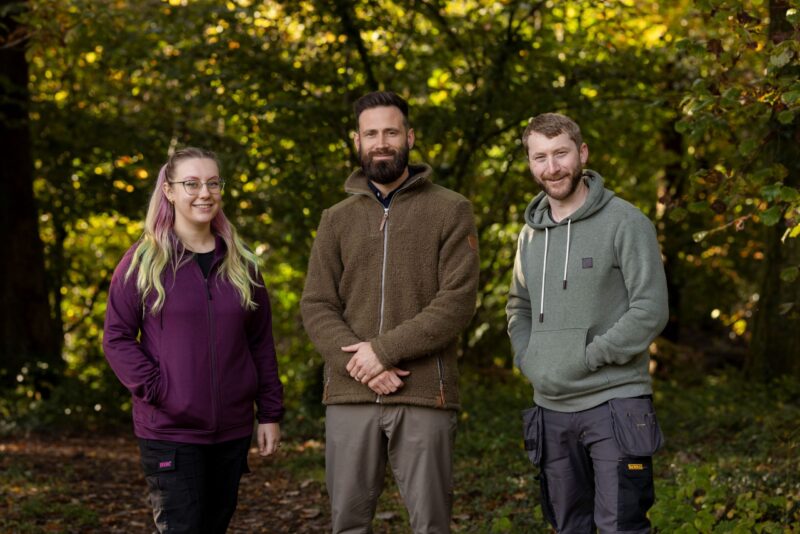
March has been a busy month for the ranger team! As the weather has been mostly dry and sunny we have exceeded the expected number of visitors this month.
As spring is awakening, we have noticed summer migrants of birds and insects have started to arrive. Nesting season has officially begun, and so our maintenance of the park is changing from land management, such as tree work, to include more amenity maintenance. I’m sure you’ve seen us helping visitors navigate the carpark machine or emptying the bins and litter picking, as we welcome more visitors to the park.
Did you see a Beefly (March’s Species of the Month) at Bryngarw Country Park? You can still submit your records to us at Your.Bryngarw@awen-wales.com or directly to SEWBReC.
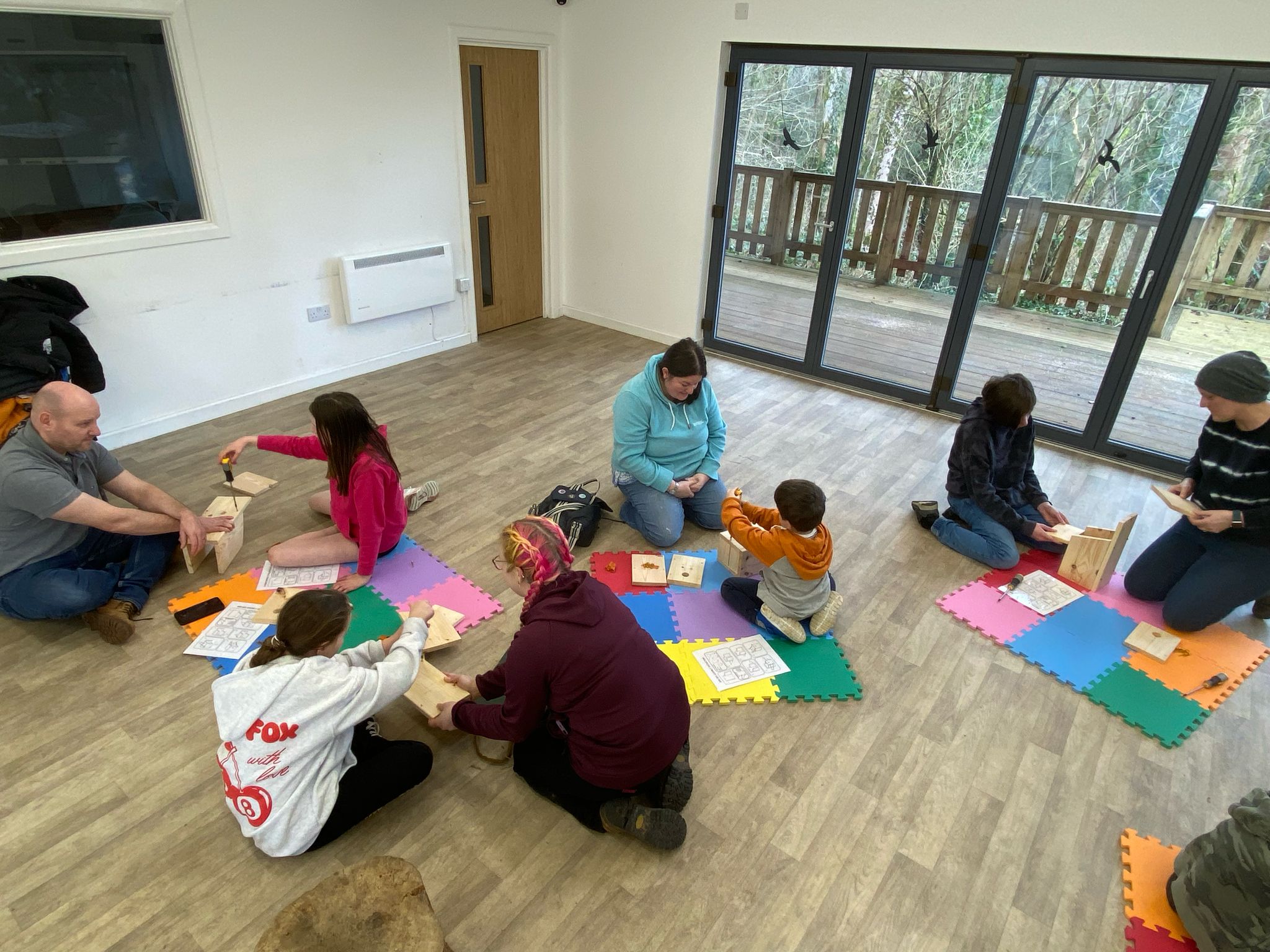
Looking back at half term
The last week of February was half term for welsh schools, and we welcomed hundreds of visitors to the park. Based off carpark sales alone, we had nearly double the visitors this year compared to February half term in 2024 which is great news!
We had our first ‘Wildlife Wednesday’ of the year, which was spent building bird nest boxes. Participants learned how to assemble their nest box, hand screwing the panels together and how to entice birds into their gardens. We had a bird identification session, looking at what species of birds could be seen outside Y Nyth. We were visited by Blue Tit, Great Tit, Coal Tit, Nuthatch, Robin, Chaffinch, Blackbird, and some very fat squirrels!
Wildlife Wednesdays will be a Ranger-led activity for every Wednesday of school holidays. Check the What’s On page on our website for future activities!
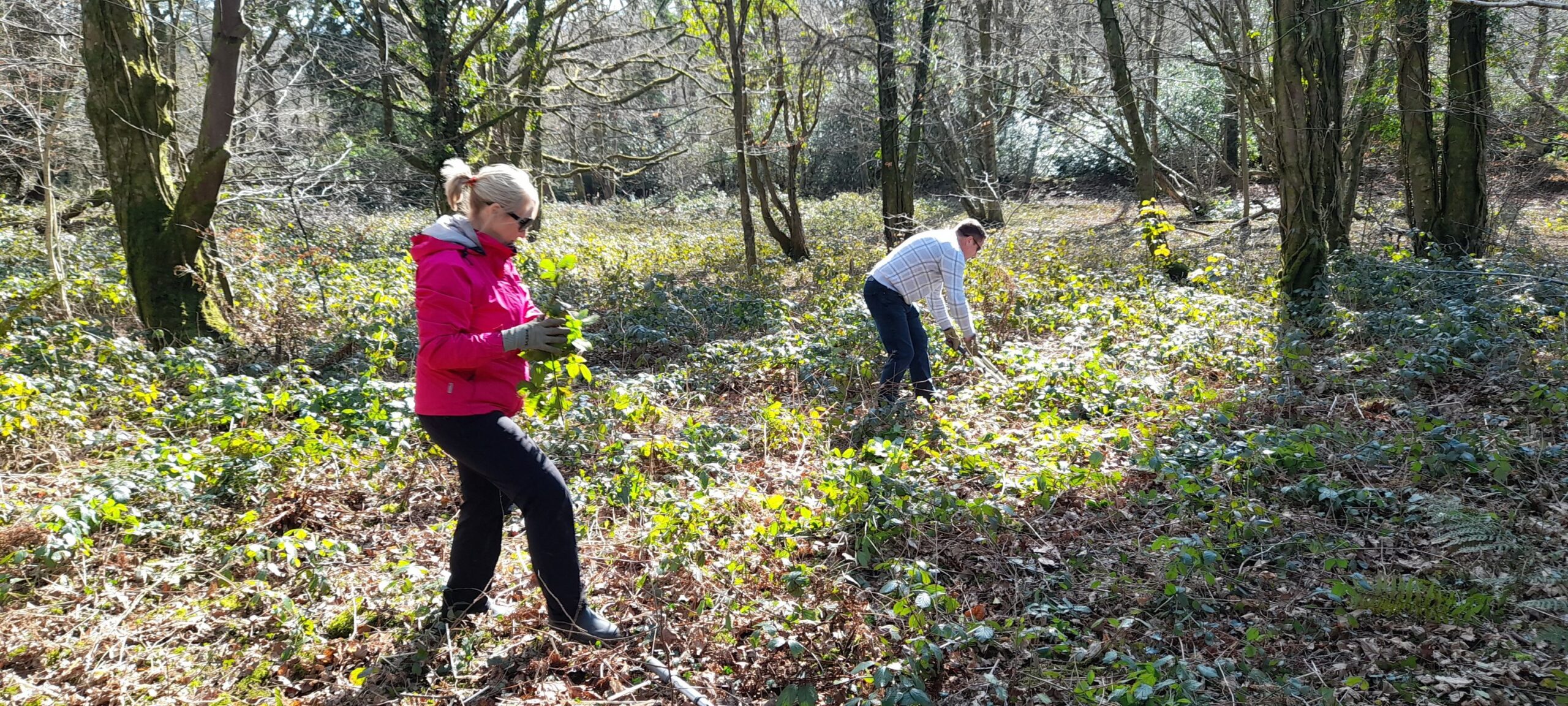
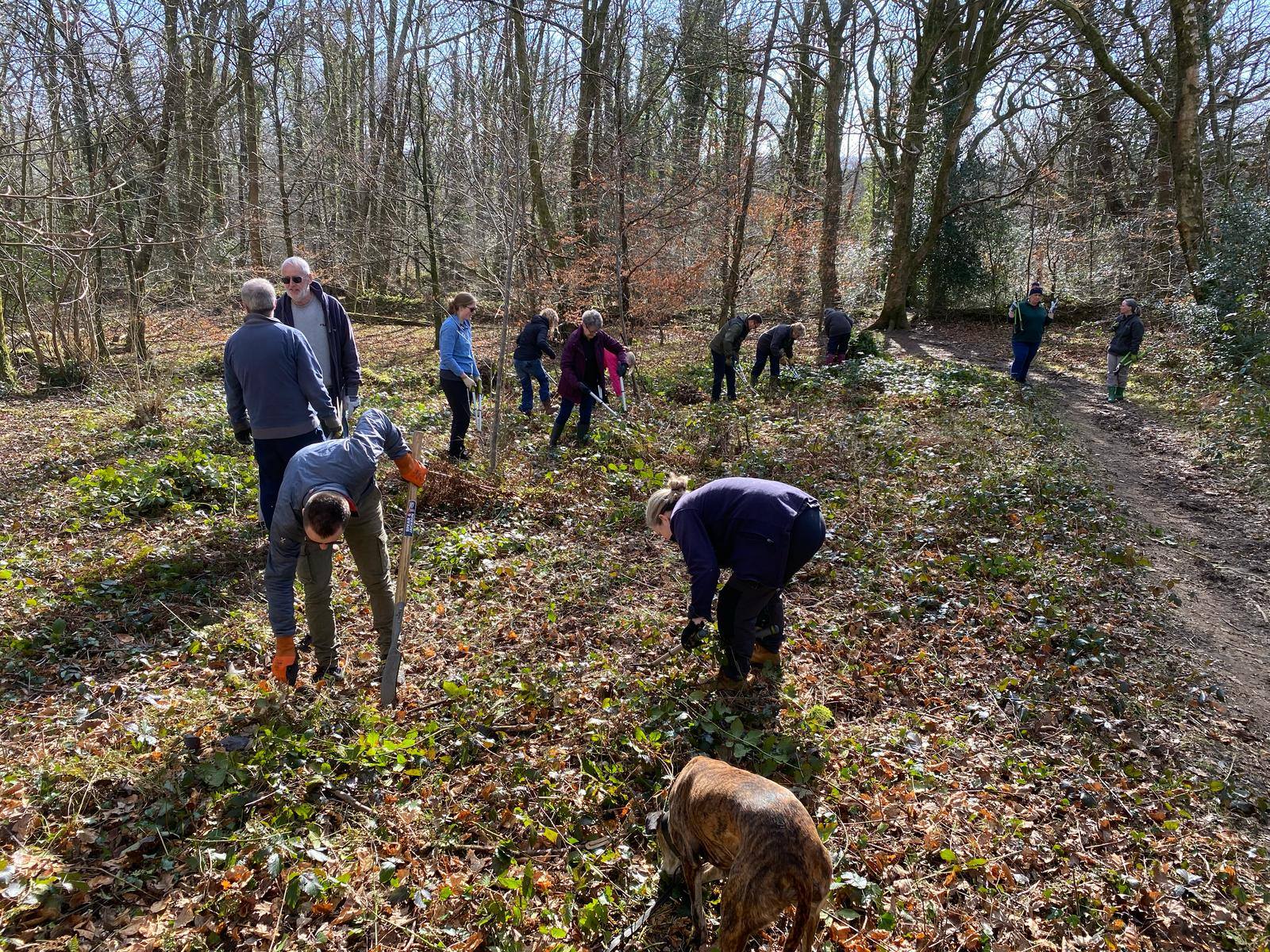
Volunteering groups
We would not be able to manage our wonderful park without the help of our amazing volunteering groups.
Our Saturday Volunteering group meet on the first Saturday of the month to complete conservation tasks. In March, the group was tasked with more bramble clearing in Coed Kensington. We clear bramble from the woodland floor to encourage the growth of woodland flowers, and we are already seeing results! We have noticed a lot more bluebell coverage than in previous years. Not yet in flower, the leaves of bluebells can be seen in the lower reaches of Coed Kensington this year, which it has struggled to colonise in the past.
Bluebells are associated with ancient woodlands, are perennial herbs and spend most of their time underground as bulbs, emerging to flower in April.
As beautiful as bluebells are, we would like to remind you not to unearth or pick bluebells from the park. Bluebells are very important sources of nectar for woodland butterflies, bees and hoverflies. Bees with short tongues, such as the Buff-tailed Bumblebee can ‘steal’ nectar from bluebells by biting a hole in the bottom of the flower, reaching the nectar without the need to pollinate the flower.
Tuesday Volunteering Group
Another busy month for our weekly volunteering group, thank you to everyone who contributed!
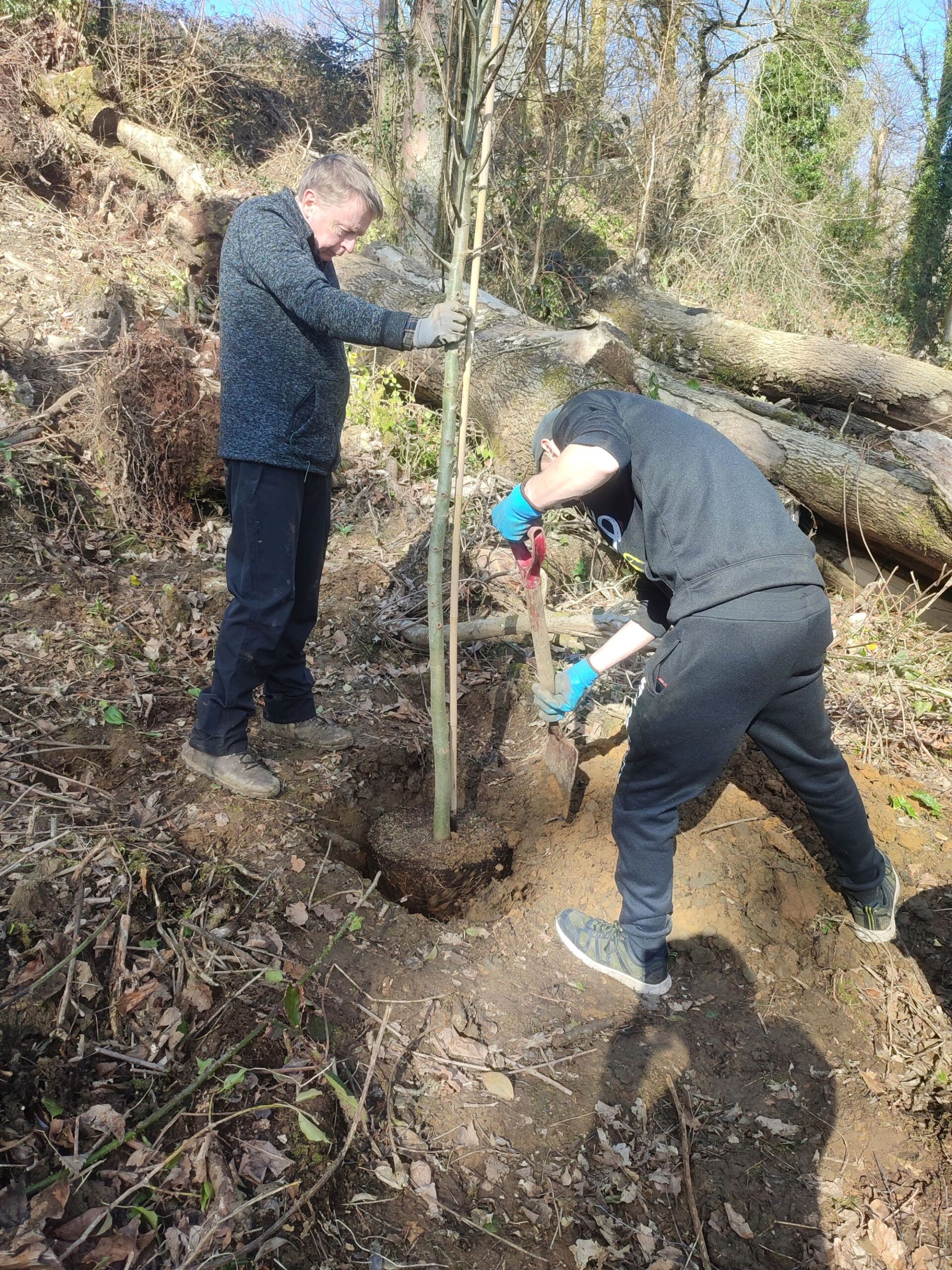
You may have noticed a lot of destruction in the woodland along the river, just below the carpark of Bryngarw Park (Coed Waunpiod East). We have had several fallen trees over the past winters, with a few large ones closing the path entirely in the early months of this year.
One such fallen tree, that fell into the river in November 2023, was removed recently using a large digger to drag the trunk out of the water. Unfortunately, this caused a lot of mess and destruction, turning up the steep bank between the carpark and the path along the river. This barren area has now been populated with newly planted Aspen trees!
Our Tuesday volunteer group planted nine Aspen of varying ages, which will grow up to fill the gap in the woodland canopy. Aspen was chosen as it thrives on well-drained soil near rivers, and flourishes in open sunlight and moist soil. The scientific name, tremula, means ‘to tremble’ and refers to the way the leaves flutter and move in the breeze.
Aspens are dioecious, meaning that their male and female flowers (catkins) – that appear in March and April – grow on different trees. Male catkins are brown and can reach between 6 – 12cm long, turning yellow with pollen when ripe. Female catkins start out green before developing into fluffy fruits.
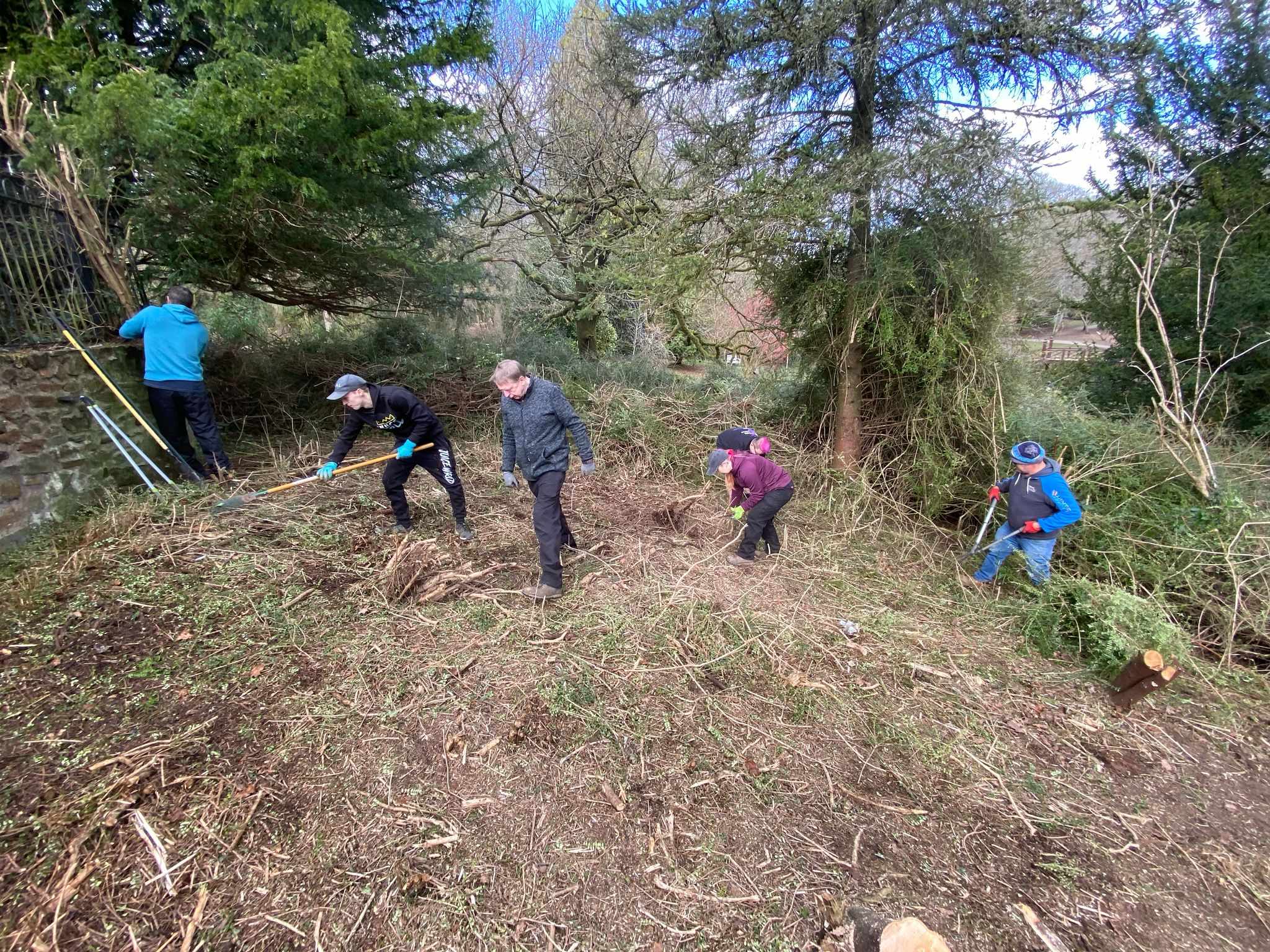
With the help of and in collaboration with B-Leaf staff and trainees, we cleared an overgrown area behind Bryngarw House this month and found some unlikely surprises!
The first was a nice surprise: Cobalt Crust (Terana caerulea)! An under recorded fungi, Cobalt Crust is rare in England and Wales. Very distinctive colouration makes it very easy to identify, it is a saprophyte, which means it gains nutrients from dead or decaying organisms, in this case the box hedge!
The second surprise was an unfortunate find: rubbish with the ‘best before’ date of 2001! Which means that it had been sitting within the hedge intact for over 20 years! This old drink can was older than our youngest volunteer! A stark reminder for us all to please pick up our litter and dispose of them in the correct bins, found within our Visitor Centre or in the car park.
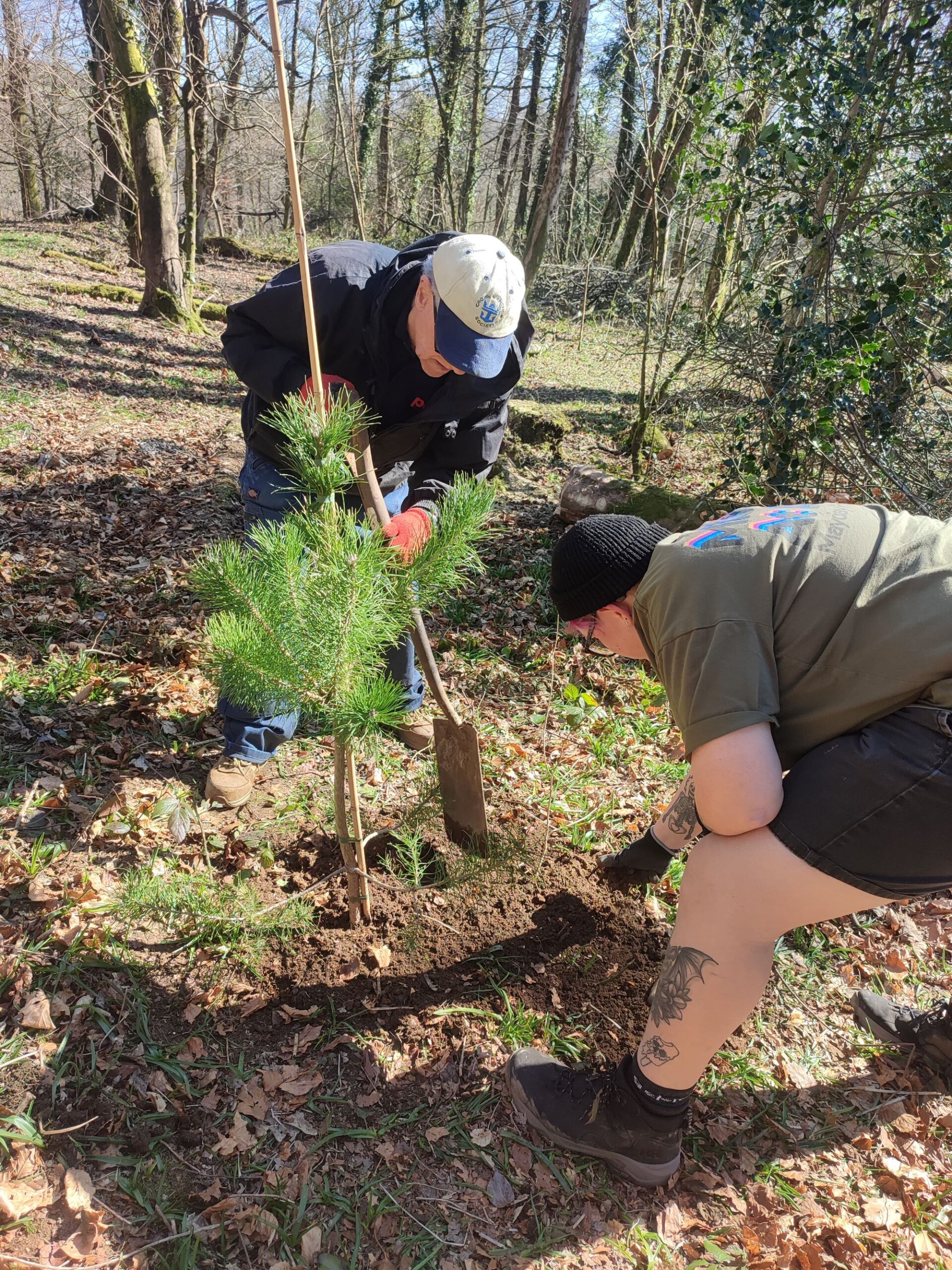
We have also been planting Scots Pine saplings in Coed Kensington. Coed Kensington was chosen as a location as it is mostly comprised of broadleaf species: Sycamore, Birch and Beech trees. To encourage diversity, we have included coniferous species (Scot’s Pine), and now all woodlands at Bryngarw Country Park have a mix of coniferous and broadleaf species.
Scot’s Pine is one of only three native conifers to the UK, and our only native pine. It’s an evergreen conifer native to northern Europe and make up the majority of the Caledonian Forest in Scotland. Mature trees grow to 35m and can live for up to 700 years. The bark is a scaly orange-brown, which develops plates and fissures with age. Twigs are green-brown and hairless. Scots Pine can be home to several species of songbird, and it is also the main caterpillar foodplant for the pine hawk-moth.
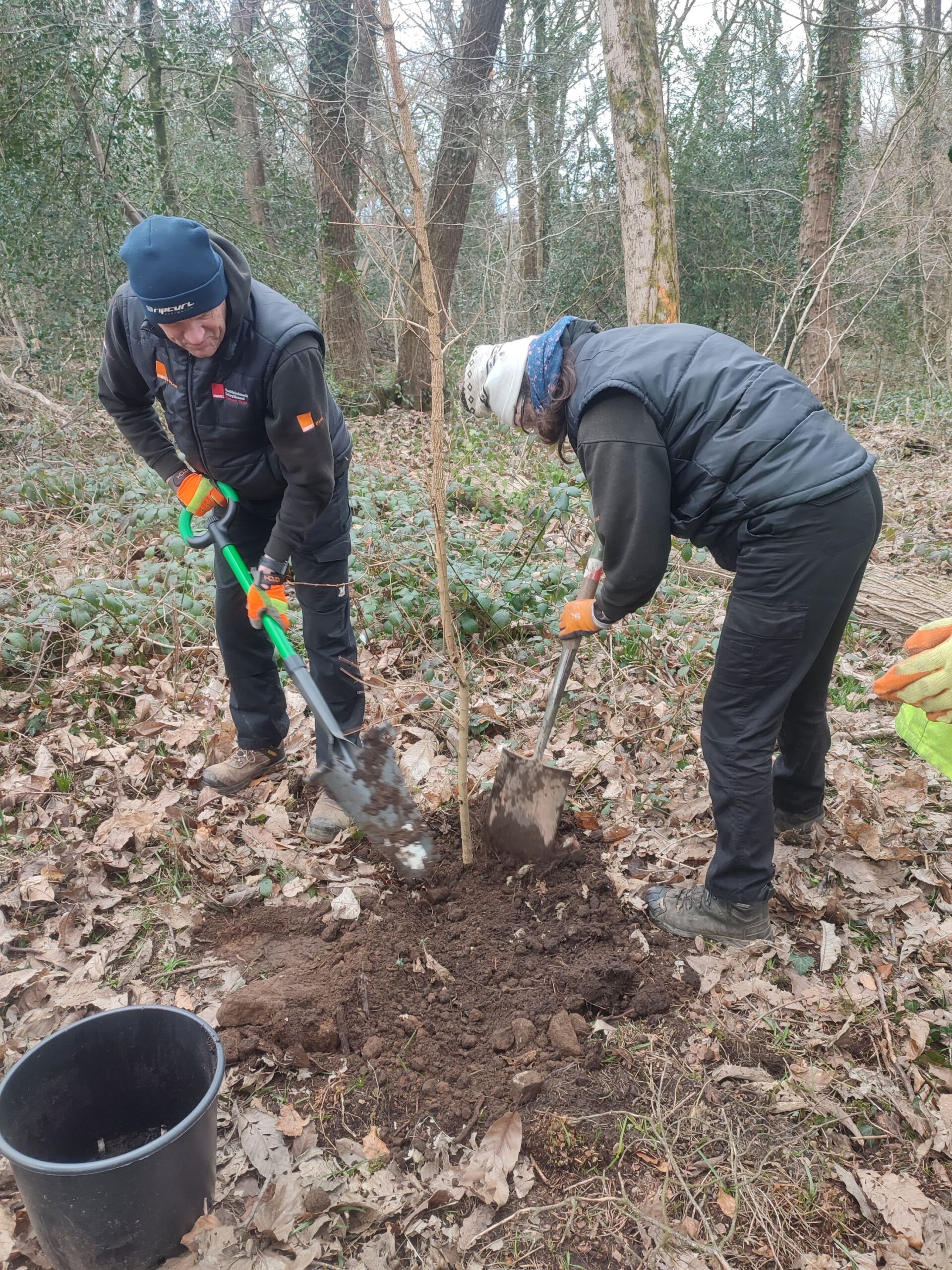
Big help from B-Leaf – more tree planting!
Thank you to B-Leaf trainees, who helped us plant Black Poplar and Field Maple in Coed Waunpiod West (Sweet Chestnut Wood) – that totals 25 trees planted in March!
Black Poplar is an interesting tree, it used to be a common sight across the UK but has become a rarity. Black poplar is dioecious, meaning male and female flowers are found on separate trees. Flowers are catkins (male catkins are red and female catkins are yellow-green), and are pollinated by the wind.
According to the Forestry Commission, black poplar is the most endangered native timber tree in Britain. In fact, there are so few wild black poplars left that it is unlikely they will pollinate each other. In addition, poplar species are prone to a variety of fungal diseases including cankers, leaf rusts and poplar scab.
Black poplar is the food plant for the caterpillars of many moths, including the hornet, wood leopard, poplar hawk and figure of eight. The catkins provide an early source of pollen and nectar for bees and other insects, and the seeds are eaten by birds.
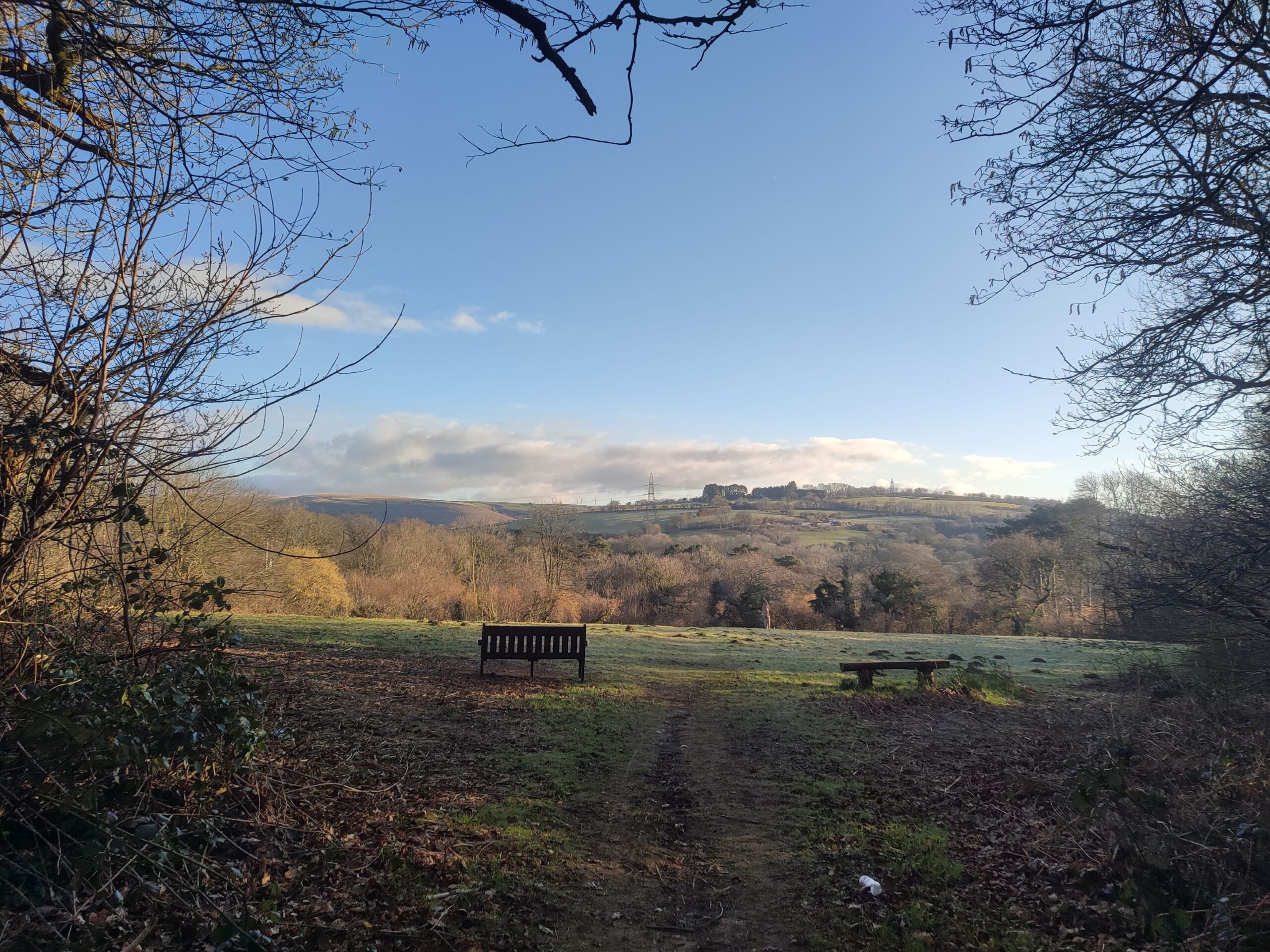
Spring Surveys
March signals the start of spring surveys! Recording wildlife is vital for understanding and protecting our natural world, informing conservation efforts, and monitoring changes in species populations and habitats, ultimately helping us make better decisions about the environment.
On a very sunny but cold morning, just after dawn, we started our first formal survey of the year – the Common Bird Census (CBC).
The CBC is a territory-mapping approach used to estimate the number and positions of territories of each species of bird present at a site. We will walk a route around the park plotting every bird we encounter, identifying birds by sight and sound. The survey will then combine the data of 8 walks (visits) throughout the survey season to figure out how many territories each species has around the park.
Special mentions from our first visit were Willow Warbler, Chiff-chaff and some very vocal Nuthatches!
Here at Bryngarw Country Park, we are embarking on a number of survey methodologies to monitor a number of species. Would you like to help? Get in touch to enquire about our Citizen Science Volunteer role!
We are looking for individuals with a passion for nature and recording wildlife. You will be instrumental in recording species at Bryngarw Country Park and the development of a biological record database. Contact Your.Bryngarw@awen-wales.com for more information.
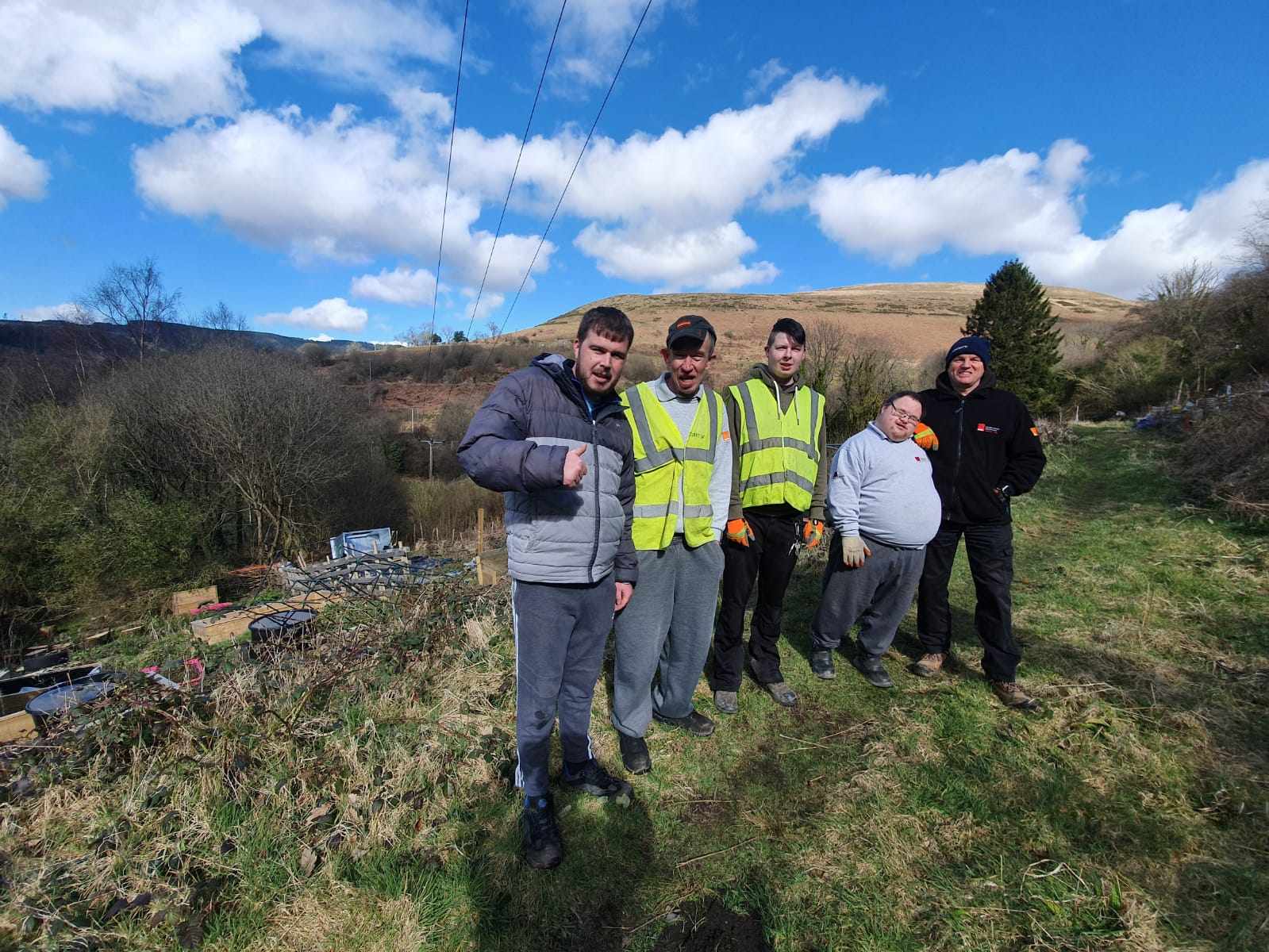
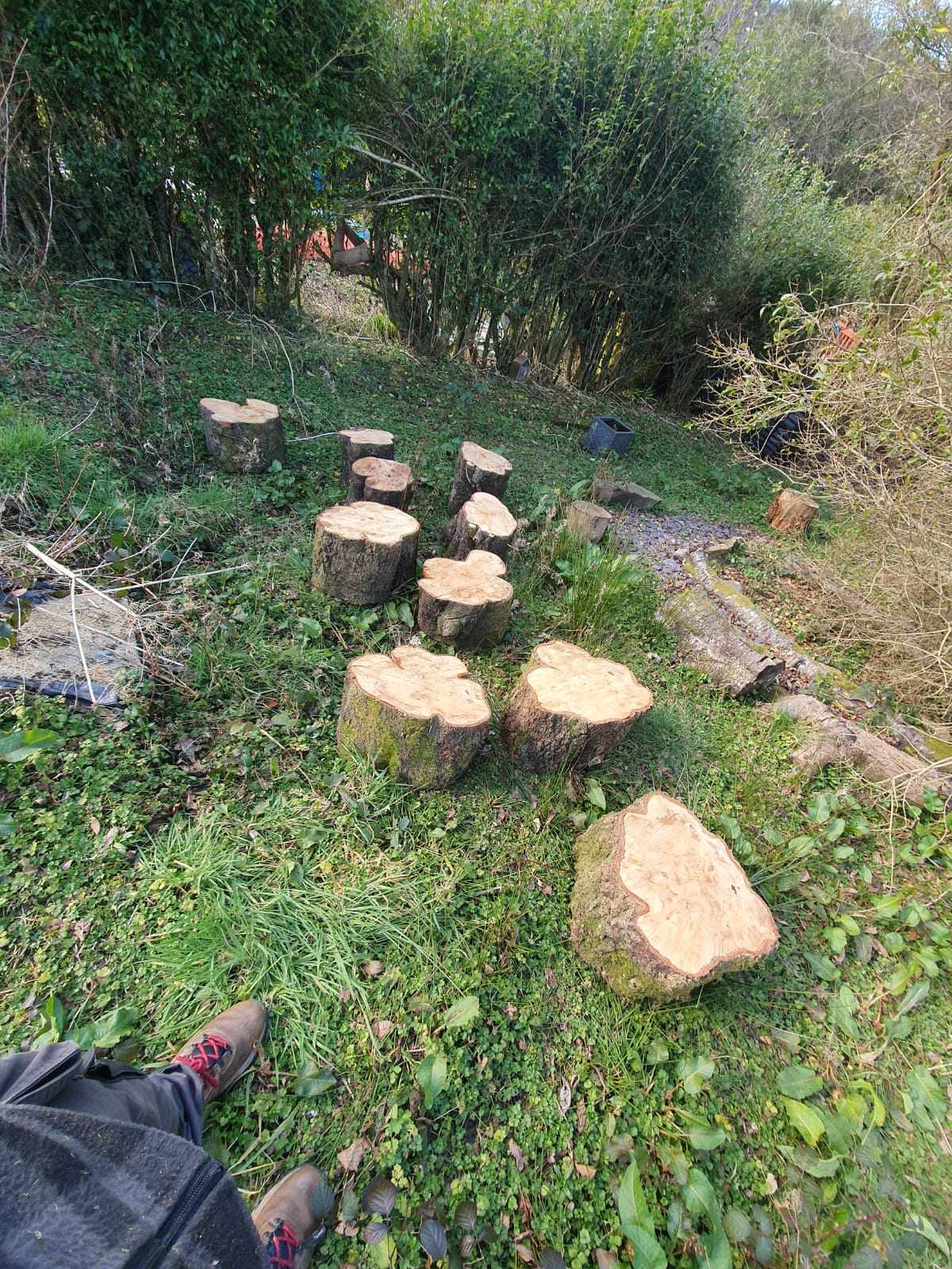
Donation of logs to School Allotment
The Ranger team and B-Leaf delivered some logs to Ffaldau Primary School’s allotment this month. The logs will be used as stools for the children to sit on as they use their outdoor space.
The allotment was gifted to the school by the council last year, and will need some TLC before it is a suitable area for outdoor education. The Ranger team have been asked to help advise on how to manage the space for wildlife and provide ‘boots on the ground’ to help create a habitat which is nature and child friendly.
What to look out for in April
As spring awakens, we have a recording challenge for you! We want to know more about the species we have at Bryngarw Country Park. Once we know what species we have, we can manage the park in a way that better benefits those species and monitor them in future.
In April, we would like you to record your sightings on your walks and submit them to recording apps or to the Ranger team (your.bryngarw@awen-wales.com).
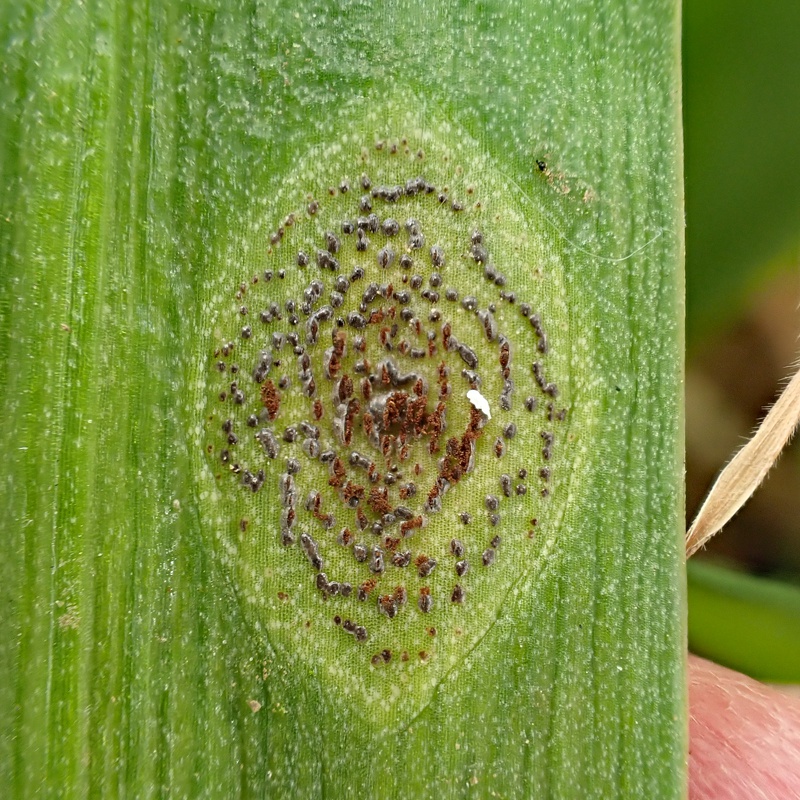
Species of the Month – Bluebell Rust / Rhwd Clychau’r Gog (Uromyces muscari)
Rusts are rarely noticed, rarely recorded and are often overlooked by nature enthusiasts, but are pretty common when looked for.
Rusts are a type of fungi, they are parasitic which means that they live in or on an organism of another species and benefits by deriving nutrients at the other’s expense. Unlike some parasites, rusts do not kill the plant, and the damage is mostly cosmetic, causing rusts coloured spots for the above ground parts of living plants.
Bluebell Rust does not kill bluebells or weaken them, and so it is no threat to our lovely bluebell carpeted woodlands. It has evolved naturally in synchrony with the lifecycle of the bluebell and when left to its own devices, both species can coexist with no problems. But it does make for a fun game of eye spy!
Rusts are species specific, so if you find a rust coloured spot on a bluebell leaf, congratulations! You’ve found it!
As mentioned above, Bluebell rust is probably common and found on most bluebells in the UK, however it has never been recorded within Bryngarw Country Park! The closest record was found in Betws and recorded by the Glamorgan Botany Group.
If you spot Bluebell Rust during April (or at any other time of year), please submit your record! Ideally via SEWBReCORD or the LERC Wales App. Instructions on how to submit records are available here, or you can attend our training session on the 9th of April – Become a Citizen Scientist!